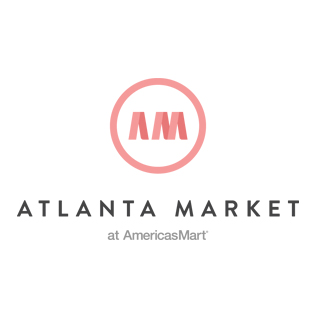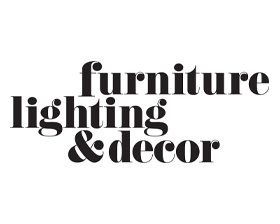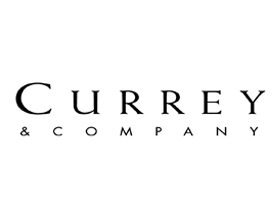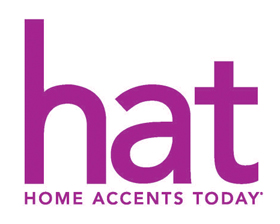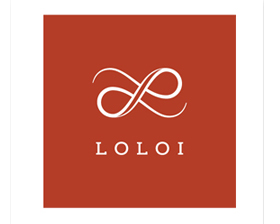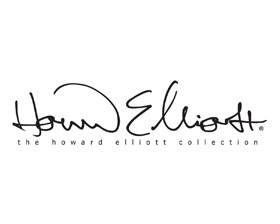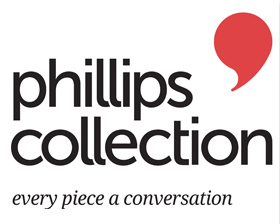Jan 2, 2014 | ART Blog
 Black. Brown. Beige. Blah.
Black. Brown. Beige. Blah.
In the sea of vendors at trade shows, it’s easy to blend in. But why would you want to? Instead, make it your goal to stand out. Forget the norm and go bold…. color, music, products displays and more can help your business stand out among a sea of boring.
When planning for your trade show participation, think about everything that will be around you. Likely, you will be surrounded by seemingly look alike booths. With this in mind, challenge yourself to stand out. How can you do this? Start with color. If you have a signature color for your brand, such as royal blue, try and use this as your main accent color for your booth. Use fabric, paint and decorations to accomplish your color goals.
Accent your color with more than just visual appeal. Use music to help energize customers. Is there a certain song that makes sense for your business? Or how about a certain artist or collection of songs? Get a playlist going and turn it on! Respect the fact that other booths are close by, so don’t turn the volume up super loud. But do turn it up loud enough that those people in your booth can enjoy it while still able to hear you talk. Afterall, selling them your product is the goal!
Speaking of products, don’t skimp out on your chance to display them at trade shows. If the show offers special display cases to showcase your product, try to work this into your budget. Then make sure the display really makes a statement. Be creative and don’t be afraid to get people talking with your choice of display. Bring this same energy into your booth displays so that customers who walk by will be drawn to the color, music and displays you have combined together. As a collective whole, you are sure to stand out.
Dec 16, 2013 | ART Blog
 Whether you are a wholesaler or a retailer, it’s important to know about your competition. Taking the time to understand who your competition is, what they are up to and why it matters to your business is extremely important in being effective in the marketplace.
Whether you are a wholesaler or a retailer, it’s important to know about your competition. Taking the time to understand who your competition is, what they are up to and why it matters to your business is extremely important in being effective in the marketplace.
Who Is Your Competition?
Competition surrounds us in our own communities as well as online. Let’s not forget about mail order catalogs, television shopping networks and house parties selling similar products to what you sell and who you sell to, as well. Take the time to know all of the outlets that may be competitive to your business, but don’t just don’t this once and think you have it all understood. The reality is that new competition is always entering the marketplace. As a store owner or manager, it’s your job to stay on top of current businesses and new businesses that are competitive to your business. In doing this, you will be better prepared to make your business stand out from the rest.
What Is Your Competition Up To?
Recognizing the competition that is directly competitive to your business will allow you to analyze why customers are purchasing from them versus you, how they are communicating in the marketplace and what their strengths are that you may be able to learn from. You may also find out along the way that you are stronger than them in many ways, including marketing, press and merchandising, however staying on track with their growth should help you strive to stand out from your competitors. You can also learn from their failures, as well. The key is to know what they are up to so that you can better support your retail or wholesale business.
Why Your Competition Matters
While a store similiar to yours two states away may not make a difference to your direct sell thru, it’s still possible to learn from their successes and failures. However, a store two towns over with similiar product assortment and the same target market definitely should be on your radar. As wholesalers, it’s very important to be aware of the national or international marketplace since your brand is more likely to be sold on a larger scale – even if not now, it may be a goal for eventually. Either way, the point is to want to know what your competition is up to so you can ultimatley learn from them. Take their success in stride, not jealousy, and learn from them however you can. Even if just through observation versus chit chat with the owner, the time you take to care will impact decisions you make for your own company. These decisions will be the determining factor in your success or failure, so everything you can lean on to help make the right decisions matter.
In addition to learning from your competition, this is a great way to get inspired. Sometimes seeing new ways of merchandising, different marketing executions and more are just what you need to recharge your business energy. So take the time to competitive shop so that your business can gain from your competition – after all, isn’t using your competition for your own growth rewarding in some way?
Dec 16, 2013 | ART Blog
 PANTONE’S COLOR OF THE YEAR 2014: RADIANT ORCHID
PANTONE’S COLOR OF THE YEAR 2014: RADIANT ORCHID
“An enchanting harmony of fuchsia, purple and pink undertones, Radiant Orchid inspires confidence and emanates great joy, love and health. It is a captivating purple, one that draws you in with its beguiling charm.”
A color that radiates on the skin with its rosy undertones, that grabs attention immediately yet doesnt steal focus from other beautiful pieces. Radiant Orchid easily compliments deep hunter greens, and offers an interesting combination when paired with turquoises, oranges and light yellows. Alternately, this vibrant shade can liven up neutral colors without ruining the minimalist goal of muted earth tones such as olive, beige and taupe. It can energize nearly any palette, and can create depth in accent.
Interested in bringing Radiant Orchid into your decor? Purple shades tend to be the least chosen when it comes to home decor, it has been been long of the radar of Pantone since the color of the year inception in 1999. Its a quietly creative and expressive shade, a magical mix of fuchsia, purple and pink, it can be mysterious and fun, it can seamlessly blend and work with current trends, falling right in line with brass, copper and color blocking. Far less bold than its deep, jewel toned purple predecessors, its pinkish grey undertone intrigues the eye and sparks the imagination, letting you run wild with possibility.
Though the color was kept secret until its official announcement, Pantone begins forecasting their color of the year selection in a process that can start in the spring, taking note of trends worldwide and influences in fashion, art, travel, film and nearly every other industry. Past colors of the year have included Emerald (2013), Tangerine Tango (2012), Honeysuckle (2011), Turquoise (2010), Mimosa (2009) and Blue Iris (2008).
Dec 6, 2013 | ART Blog
 The start of the new year is a great time to assess what is ahead as well as what you just accomplished – or lacked to, for that matter – in the previous year. Joining you in this should be your employees. To jump start this important review process, a few questions are outlined below to help engage your thoughts, provoke new ones and lead you towards accomplishing new goals in the year ahead.
The start of the new year is a great time to assess what is ahead as well as what you just accomplished – or lacked to, for that matter – in the previous year. Joining you in this should be your employees. To jump start this important review process, a few questions are outlined below to help engage your thoughts, provoke new ones and lead you towards accomplishing new goals in the year ahead.
1. What was the single biggest accomplishment for your retail store or wholesale business in the past year? This accomplishment does not have to be reflective of dollars, but instead it can represent opportunity, steps taken or anything else you truly believe made the largest impact on your business. Make sure your employees have the unique opportunity to give their individual thoughts on this, as well.
2. What do you believe you failed to accomplish in the past year that you had hoped to? Again, make sure your employees can share their opinions here. Take the time to listen to their thoughts and together, you can evaluate both the strengths and weaknesses of your business in an effort to do better in the coming year.
3. What were the top selling items of your store or brand in the past year?Do you think they will continue to trend as top sellers in the new year? Either way, did you anticipate they would be top sellers? If not, how did you react to their sales to provide proper inventory? How can you learn from this to do again in similar situations?
4. What items do you think may replace your top sellers from this past year? Are you prepared to chase any items that sell well from a financial perspective, or have you already eliminated wiggle room in your buying budget?
5. Is your sales team at the level of performance you want them to be? What do they believe they can do to improve their sales and overall work for your business? What do you want them to do to improve? How will you communicate, educate and inspire them to be stronger performers?
6. What new marketing initiatives can you make to gain visibility for your store, your business, your website and your overall brand / store image? Are you prepared to take the extra steps to do this? What are these extra steps?
7. Did you reach your target market in the past year?Who is your target market? Do you believe your audience may have changed since you opened your store or business and if so, how can you react to accommodate that?
8. Are there new layers (new product, new branding, new marketing, etc.) to your business that you plan to add in the coming year? What are they? How will this impact your employees? You? Your time? Your budget? Make sure everyone necessary understands the process.
9. Do you have to give up anything to get ahead this year? What? Are you willing to make this sacrifice? Are you employees prepared? What do you each need to do to prepare for this?
10. What goals do you have for yourself and your business that need support from outside resources? Whether they are vendors, contractors, consultants, photographers or anyone else, make sure you have scheduled times to work with the necessary parties so that you aren’t left chasing them last minute.
Hopefully these questions can help engage you and your entire team to jump start the year ahead with excitement and energy to reach the goals you have set for your business. Make sure to take the time to really evaluate last year in an effort to do better this year. Learn from both your mistakes and successes and when necessary, learn from others. Retail continues to be tough, so it’s okay to not be able to do it alone. Work together and hopefully 2014 will be the year you plan for it to be – or better!
Contributed by Nicole Leinbach Reyhle, Founder & Editorial Director of Retail Minded – the nation’s only support for independent businesses both in and out of their stores. Learn more at www.RetailMinded.com
Oct 7, 2013 | ART Blog
 Founded in 2004, Yelp was founded to “help people find great local businesses like dentists, hair stylists and mechanics.” While retailers specifically aren’t called out here, Yelp has definitely become a trusted destination for consumers to refer to when they are deciding on where to shop, what to do and places to eat. Essentially, it’s an information desk for customers – at their fingertips. The question for a retailer is, “Do you need Yelp?” And our simple answer? Yes.
Founded in 2004, Yelp was founded to “help people find great local businesses like dentists, hair stylists and mechanics.” While retailers specifically aren’t called out here, Yelp has definitely become a trusted destination for consumers to refer to when they are deciding on where to shop, what to do and places to eat. Essentially, it’s an information desk for customers – at their fingertips. The question for a retailer is, “Do you need Yelp?” And our simple answer? Yes.
While restaurants, salons and other service focused businesses tend to gain more reviews and consumer interaction on Yelp, retailers are not left out. Customers actively reference Yelp when visiting unfamiliar cities to help map out their shopping trips, as well as in their own communities to both discover new places and comment on their experiences. As a retailer, you simply can’t ignore this.
Letting Yelp Do The Talking
Because Yelp accepts reviews – both the good and the bad – and all businesses must either suffer or gain from them, it’s in your best interest to earn only the best reviews you can. Then again, with or without Yelp, shouldn’t your goal be to have stellar reviews anyway? With Yelp, though, there is no “heard it through the grapevine” type of referral, but rather black and white and very clear reviews to be read for all to see. Although you can hope every customer will write a raving review of your store, there will likely be a time when an unhappy customer takes to typing a review at Yelp.
It’s possible a sales associate of yours had a bad day and it didn’t come across as gracious as this customer may have liked. Maybe someone had to wait too long before you said hello or offered help. Possibly new inventory just arrived at the back door and you quickly ran to let UPS in… leaving guests unattended on the sales floor. Or maybe, just maybe, you slept in and arrived ten minutes late to your store and a customer was waiting when you got there. Whatever the reason, there will surely be a customer to bark about it.
While barking isn’t typically in response to something good, it’s also typically told to stop without a conversation to resolve it. In the case of Yelp, this is also the case. Yelp is not about having a conversation, but rather stating one’s thoughts without a rebuttal to be shared. So what can a retailer do?
For starters, if an email or profile is visible for the comment-er on Yelp, you can always reach out to them privately in a professional and friendly fashion. It should never be approached as an attack, but rather a gesture to offer a chance to give them another customer service experience – presumably, stronger. If you’re wondering why waste your time with this if it’s just one person… imagine this. People who make reviews can change them. So rather than accept your negative reviews, you can encourage change by delivering customer service or support that deserves it. Okay, we recognize that not everyone will take the time to actually make a change to their Yelp. But for the chance a bad comment could be changed, it’s worth the efforts. Afterall, Yelp gets about 78 million monthly unique visitors. That’s a number worth thinking twice about.
Yelp’s Filter
With negative comments hopefully not being your problem, consider this: Yelp runs all their comments through a filter before featuring any, which means even positive comments may never be seen. If Yelp identifies any reviews to be suspicious – whether for the good or bad – they will block them from the site. So in other words, fabulous reviews that are genuine and from customers may even get blocked. It’s possible for you to see them by digging around on Yelp a bit, but based on Yelp’s filter, they may never rank at the top of your store’s review list.
Should this persuade you not to encourage customers to post positive reviews on Yelp? Nope. But you should be aware of how Yelp is organized and manage it from your end to better manage your business. Another tip? It appears that people who are registered Yelpers with active profiles get higher rankings in their reviews. While we can’t find any proof to confirm this, we suggest registering to Yelp and encouraging customers the same for a more active Yelp experience.
Finally, because Yelp is such a big deal, there are actually services that help manage negative reviews. Reputation.com and DefendMyName.com are a couple to consider if you think you need this type of support. Our experience here is great customer service in your store is the best defensive you have, but for some, they need a little extra TLC.
Contributed by Nicole Leinbach Reyhle, Founder & Editorial Director of Retail Minded – the nation’s only support for independent businesses both in and out of their stores.
Sep 24, 2013 | ART Blog
 If you were to ask any small business owner what their #1 priority is, most would say cash flow. After all, without cash to keep a business afloat, there is NO business. For retailers, the challenge of identifying where their cash is best spent and best managed takes top priority. Typically, most small retailer’s have their dollars tied up in inventory. For many, this can be as much as 75% to 90% of their total business assets, making retailers unique in their cash flow management compared to other small businesses.
If you were to ask any small business owner what their #1 priority is, most would say cash flow. After all, without cash to keep a business afloat, there is NO business. For retailers, the challenge of identifying where their cash is best spent and best managed takes top priority. Typically, most small retailer’s have their dollars tied up in inventory. For many, this can be as much as 75% to 90% of their total business assets, making retailers unique in their cash flow management compared to other small businesses.
Inventory Gone Bad
Plain and simple, too much of anything isn’t good. And in the case of inventory, this is especially true. Inventory costs money, therefore consumes buying dollars and total cash from a retailer’s budget. Yet, there always seems to be something necessary to buy – whether it’s a reorder, a new product, an entire product category or more depth of current inventory – retailers always have the challenge of determining where they should allocate their next available dollars. Yet all too often, “available dollars” aren’t there and then inventory becomes outdated or unavailable, creating a shopping environment that doesn’t appeal to customers.
Among the worst struggles is when indie retailers know certain products weren’t good for their store assortment, yet they are hesitant to mark them down. This is an old fashioned case being retail naive when a store buyer simply does not want to acknowledge their poor buying decisions or admit what they bought is not working. The reality is, if something is not selling, it’s hurting your open to buy dollars. Why? Because without selling this – even through a strategic markdown plan – you can’t recover any money invested… which then becomes money lost. Too many buys like this can kill a store.
Of course, excessive markdowns can equal tragic margins. Yet you can’t get your margins back to where they should be without an effective markdown management plan. You won’t gain full margins on the sales of these items – this is not a secret that we’re trying to hide – but you also won’t be able to ever get your dollars made up with bad inventory in your store. And on that note, here’s a challenge for you.
- Walk your store as a customer would and write down your favorite three items. Now identify why they are your favorite three.
- Walk your store as customer would and identify your least favorite three items. Identify why.
- Take the role of management again and identify how long each of these items has been on your store shelves. Do you see any similarities to the in-store dates versus your preference of liking them or not? While shelve dates don’t always tell the story of a poor buy or not, it’s a good first step in identifying what’s been hanging out for too long that isn’t selling and needs to go.
The reality of “boutique” buyers is that they like things fresh, new, different and strong in quality or style or both. They shop indies because they love the variety of product assortment, as well as the uniqueness of the stores, employees and charm of their location. But don’t be fooled. These customers are smart, and if they see the same inventory again and again and again, they won’t be running to check out “what’s new” every time they walk by. Be sure to clear your inventory clutter through appropriate markdowns to move inventory and open up buying dollars. And while your big picture goal is not to have a lot of markdowns necessary, for those upsets you do buy, don’t let them ruin the rest of your inventory’s spotlights.
Want more cash flow tips? Send us your questions or post them below! We look forward to supporting you in future blogs and through Retail Minded Magazine – a more in depth approach to support boutique retailers!
Contributed by Nicole Leinbach Reyhle, Founder & Editorial Director of Retail Minded – the nation’s only support for independent businesses both in and out of their stores. Learn more at www.RetailMinded.com.
 Black. Brown. Beige. Blah.
Black. Brown. Beige. Blah.


 The start of the new year is a great time to assess what is ahead as well as what you just accomplished – or lacked to, for that matter – in the previous year. Joining you in this should be your employees. To jump start this important review process, a few questions are outlined below to help engage your thoughts, provoke new ones and lead you towards accomplishing new goals in the year ahead.
The start of the new year is a great time to assess what is ahead as well as what you just accomplished – or lacked to, for that matter – in the previous year. Joining you in this should be your employees. To jump start this important review process, a few questions are outlined below to help engage your thoughts, provoke new ones and lead you towards accomplishing new goals in the year ahead. Founded in 2004, Yelp was founded to “help people find great local businesses like dentists, hair stylists and mechanics.” While retailers specifically aren’t called out here, Yelp has definitely become a trusted destination for consumers to refer to when they are deciding on where to shop, what to do and places to eat. Essentially, it’s an information desk for customers – at their fingertips. The question for a retailer is, “Do you need Yelp?” And our simple answer? Yes.
Founded in 2004, Yelp was founded to “help people find great local businesses like dentists, hair stylists and mechanics.” While retailers specifically aren’t called out here, Yelp has definitely become a trusted destination for consumers to refer to when they are deciding on where to shop, what to do and places to eat. Essentially, it’s an information desk for customers – at their fingertips. The question for a retailer is, “Do you need Yelp?” And our simple answer? Yes.



